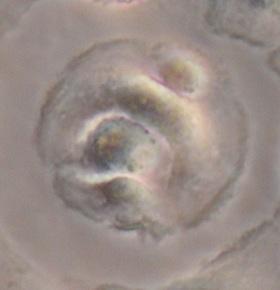Using AI to control energy for indoor agriculture
30 September 2024
Published online 9 August 2012

Macrophages are immune cells that engulf and digest invading bacteria and tidy up dying cells or the remnants of dead ones. The activity of macrophages must be tightly controlled to prevent the cells from doing any harm.
Dominik Rückerl an immunologist at the University of Edinburgh, United Kingdom, led a team including Nouf Laqtom from the King Abdulaziz University, Jeddah, Saudi Arabia, to investigate microRNAs, the tiny fragments of RNA that help regulate the activation of macrophages. They publish their findings in the journal Blood.
The researchers surgically implanted Brugia malayi nematodes into the lining of the abdominal cavity of mice to promote macrophage activation. They identified three types of microRNAs that were up-regulated in helminth-induced macrophages, while one was down-regulated.
Further tests in cell culture found that one of the three up-regulated microRNAs, called miR-378-3p, was induced by the, a cell-signalling protein Interleukin 4. Both experiments showed that miR-378-3p targets the Akt signaling pathway, meaning that Akt mediated signals are essential for IL-4 induced macrophage proliferation.
The researchers suggest that targeting the Akt pathway could be an important way to control this form of macrophage activation, which can lead to tissue damage and promote tumor growth.
"MicroRNAs rarely act in isolation, or target a single gene. We are looking more broadly at multiple microRNAs regulated by IL-4 and identifying their targets," says Judi Allen, principle investigator for the study. "We hope to have a fuller picture of the pathways that are regulated by microRNAs in alternatively activated macrophages."
doi:10.1038/nmiddleeast.2012.111
Stay connected: